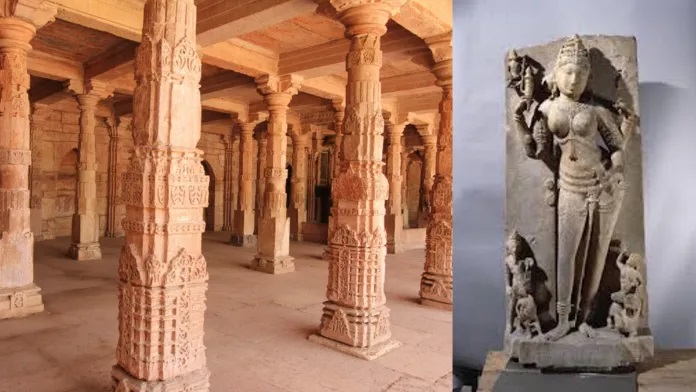ASI Completes Extensive Survey at Bhojshala, Unearths Ancient Artefacts

News Mania Desk/ Agnibeena Ghosh/28th June 2024
The Archaeological Survey of India (ASI) recently concluded a comprehensive 96-day survey at Bhojshala in Dhar, Madhya Pradesh, unearthing a treasure trove of over 1700 artefacts. This significant excavation effort continues to reveal insights into the rich historical and cultural heritage of the region.
Dating back to the Paramara period from the 9th to the 11th century, the findings include numerous statues, structures, pillars, walls, and murals. One of the standout discoveries is a 27-feet long brick wall near a sanctum sanctorum, a rarity as most ancient structures in India from that period were typically constructed with stone.
Archaeologists are particularly intrigued by the brick construction, suggesting that it could indicate an even more ancient origin, potentially dating back to the era of the Mohenjodaro civilization. This hypothesis challenges previous notions about the antiquity of the site, hinting at deeper historical layers yet to be fully understood.
Among the notable artefacts found are inscriptions featuring Quranic verses and statues associated with Jainism, underscoring the site’s cultural diversity and historical significance. Murals depicting scenes of warriors engaged in battles further enrich the narrative of the site’s past.
The ASI’s excavation efforts have been conducted within a 50-meter radius of Bhojshala, adhering to court directives. As the survey nears completion, archaeologists are preparing a detailed report scheduled for submission to the court on July 2, with a subsequent hearing on July 4.
According to experts involved in the excavation, the discoveries affirm Bhojshala’s identity as a temple complex from the Paramara period. Specific areas within the site have yielded distinct findings:
- Sanctum Sanctorum: A significant wall structure uncovered from a 27-feet deep excavation.
- Room Underneath Stairs: Discoveries include statues of Vagdevi, Saraswati, Hanuman, Ganesh, along with conch shells and chakras.
- North-Eastern Corner and Dargah’s Western Part: Statues of Krishna, Vasuki Naga, and Shiva.
- North-Southern Corner: Pillars, swords, and remnants of carved walls.
- Yagyashala Area: Stones bearing Sanatani symbols.
- Dargah: Identification of an underground Akal Kuiyan.
- Chemical Treatment on Pillars: Revealed intricate carvings of Sita-Ram and inscriptions such as “Om Namah Shivaya.”
These findings not only illuminate the architectural and artistic prowess of ancient civilizations but also underscore the continuous cultural and religious significance of Bhojshala through millennia.
The ongoing excavation at Bhojshala promises to unveil further revelations about its historical layers, offering a deeper understanding of India’s rich cultural tapestry and heritage. As researchers continue to delve into the site’s mysteries, each artefact unearthed adds to the mosaic of history preserved in the heart of Madhya Pradesh.






